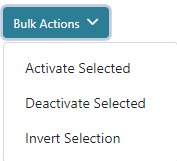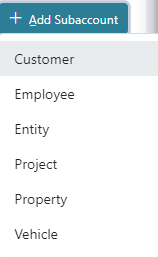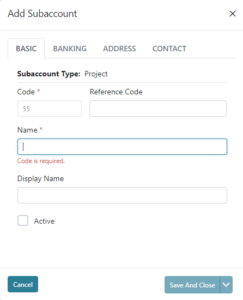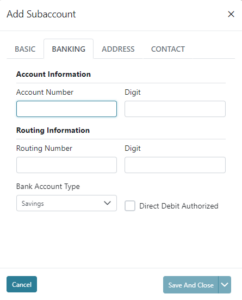In Subaccounts you are able to add, edit, and delete subaccounts that are included in the system. There are a number of subaccounts that have been preconfigured in each organization for commonly used items. Each subaccount is assigned a subaccount type and the subaccount types are tied to specific accounts and can be used only with an account that has that particular subaccount type. The grid view will display each subaccounts Code, Name, Subaccount Type, and if they are Active.

You can print or download a list of subaccounts using the printer or excel icons on the right above the grid view.

You can search for subaccounts using their code or name and you can filter using the Subaccount Type, and Active Status.

You may use the Bulk Actions by selecting multiple subaccounts and then selecting to Activate, Deactivate, or Invert Selection to change their status in bulk.

There are action buttons on the right of the grid for each subaccount to edit or delete the subaccounts; however, you may not delete a subaccount that already has entries or documents issued from it, but you can make them inactive using the Bulk Actions shown above.

When you need to add a new subaccount, you will first select the subaccount type. Each account is assigned specific subaccount types so you can review the account again to see the subaccount type you may need to create if you are unsure. Some subaccounts you may create for the purpose of making entries in the system with accounts and others you may create for the purpose of issuing documents such as invoices, checks, and receipts.

When adding a new subaccount or editing an existing subaccount a screen will display allowing you to populate additional information for the subaccount in the following tabs; Basic, Banking, Address, and Contact. Each of these tabs has different information that can be helpful and all are optional except the Code and Name on the Basic Tab. The codes of subaccounts are automatically assigned by the system using the next highest number and each subaccount type has its own unique number sequencing.




